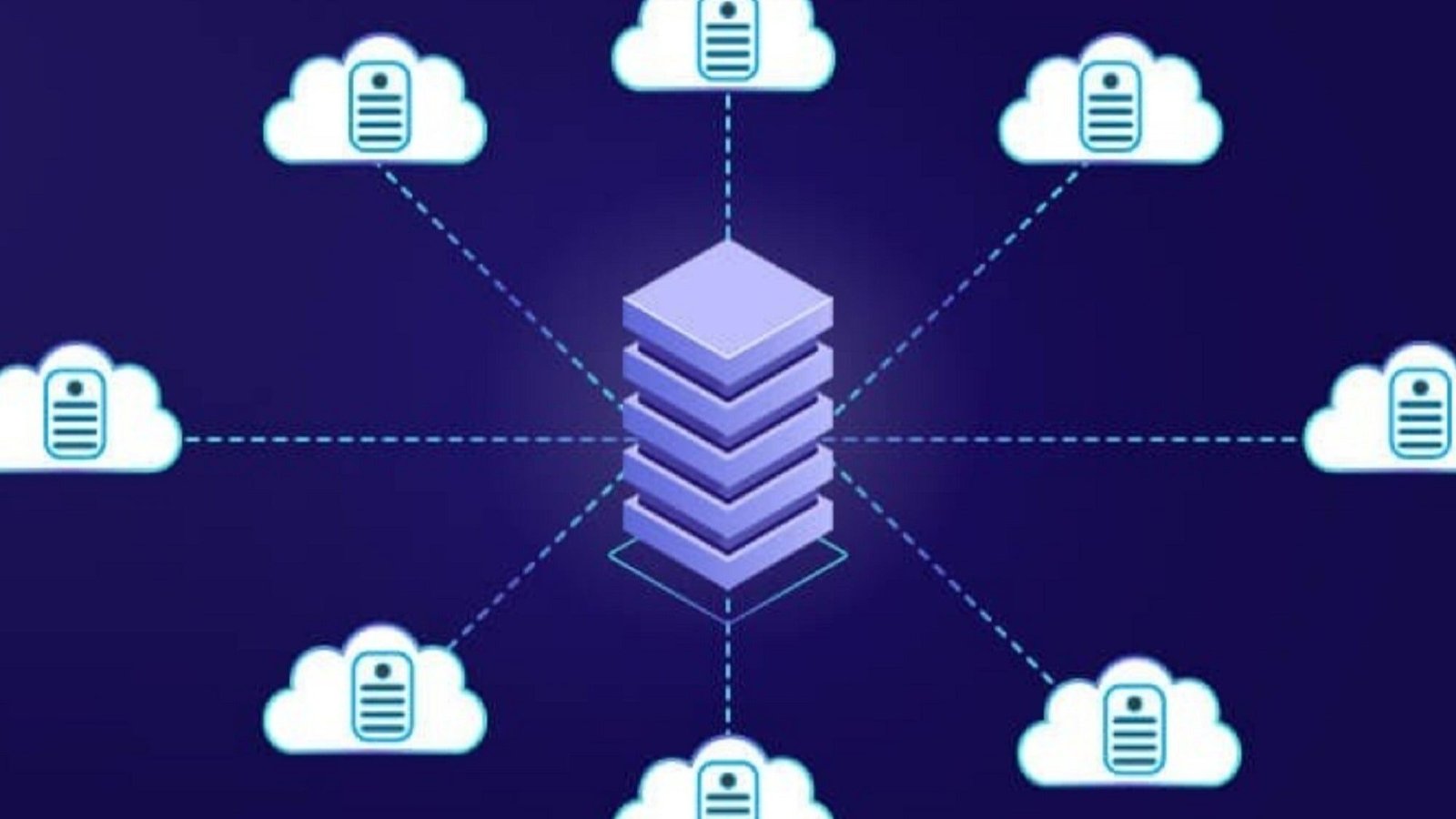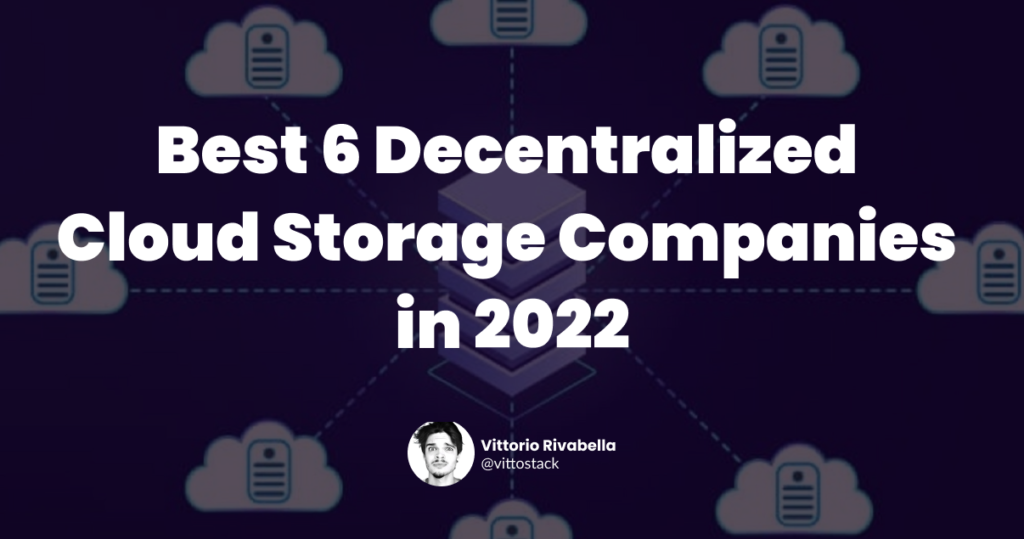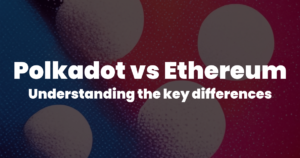Twenty years ago, cloud storage providers effectively replaced the overhead – both for developers and startups building apps and websites, as well as for users storing their pictures and documents – of owning and maintaining physical hardware storage. However, relying on a handful of centralized providers to store and elaborate our data, has fostered and demonstrated a number of concerns around data ownership, availability, reliability, and censorship resistance.
That’s where decentralized cloud storage solutions come into play – instead of having all of our photos, videos, and documents, in privately owned data centers around the world, they allow to distribute data across geographically distributed nodes, connected through a peer-to-peer network, and sometimes, orchestrated by a consensus mechanism (usually proof of storage). This is very different than a traditional cloud model which silos data into regions that are prone to outages.
We’ll dig deeper into how this new storage paradigm works later in this guide. Let’s first understand what is decentralized cloud storage.
What is Decentralized Data Storage?

Decentralized data storage or decentralized cloud storage, offers a different way of thinking how data get stored and accessed.
Instead of having all the data stored in data centers, it gets broken down into micro-pieces (sharding), encrypted, and spread on the spare memory of multiple computers running software (nodes) and connected to a peer-to-peer network of other nodes running a copy of the same software.
There are two big groups of decentralized storage platforms:
- Decentralized cloud storage using the blockchain
- Decentralized cloud storage NOT using the blockchain
The decentralized storage networks using the blockchain, use it to validate storage transactions by implementing a Proof-of-Storage-based consensus mechanism that allows node operators to earn tokens, usually on Ethereum, in exchange for the storage space provided. The others simply don’t implement any kind of consensus mechanism but maintain the peer-to-peer nature, and sometimes – like with Storj – also the rewards mechanisms.
If this sounds confusing to you, take a look at the complete blockchain developer roadmap to better understand how the blockchain, consensus mechanism, and decentralization in general, work.
In any case, using a decentralized cloud storage solution means your data will be encrypted and stored across multiple locations of nodes connected between each other in a peer-to-peer network.
But let’s better understand how it works.
How Does Decentralized Cloud Storage Work?
Decentralized storage applications store data on a distributed p2p network run by computers located across multiple locations. Nodes are responsible for storing and securing data and maintaining the p2p network alive, communicating and sharing information with other nodes.
On one hand, we have users and developers paying significantly less to store their data in an encrypted and decentralized fashion. On the other hand, we have one or more computers, running the same piece of software, and storing parts or copies of the same data.
For their efforts, node providers offering their spare storage are usually rewarded by receiving incentives in form of tokens paid by users to store their data. Rewards are not high as blockchain developers salaries but offer a good opportunity to produce extra income out of unused storage space.
To make the data reliably available, while ensuring privacy and security, decentralized storage networks shard and encrypt the data stored.
Data sharding and security
Decentralized cloud storage providers usually use things like sharding and encryption to optimize and secure data transactions.
Sharding breaks objects into small pieces called shards, encrypts them, and distributes those shards across the storage nodes. each node only has access to a small shard of the stored data at any given time. To retrieve the object these peer-to-peer networks need only a portion of the data’s shards to compose the data for transmission.
Security-wise, data stored on the nodes is encrypted, and only the data’s owner holds the private encryption key, hence making storage providers unable to read the data. Conceptually similar to the Blockchain, decentralized storage models draw their security also from their widely distributed structure.
With a brief understanding of what decentralized cloud storage is, let’s understand when you should or shouldn’t use a decentralized cloud storage solution.
Why Use Decentralized Cloud Storage Solutions?

Until now, most applications’ backends and users have used cloud storage services to store their data and applications, finding repair under centralized data centers owned by companies like Amazon, Google, or Microsoft.
Although cloud storage providers have de facto provided cheaper, scalable, sustainable, and more readily accessible storage solutions than physical hardware and servers. Centralized cloud providers have also raised concerns about their security, reliability, and control over the data they’re storing. To not talk about their tendency to force users and companies into inflexible and expensive cloud services and storage plans due to a lack of viable alternatives.
That said, perhaps the biggest concern with centralized data storage models is that end users are required to trust the central authority of the provider to keep their data available, and secured, and to not tamper with or censor the content that the centralized cloud data providers host.
Alternatively, blockchain technology and decentralized peer-to-peer networks have fostered a whole new way of storing data: decentralized cloud storage.
In contrast to permissioned cloud providers, decentralized cloud storage services leverage technologies spanning from distributed networks, sharding algorithms, cryptography, and occasionally, consensus mechanisms like Proof of Storage, to mitigate undue control or influence. All of this, while maintaining the data readily available, secured, and drastically cheaper to store.
This overall new data storage architecture helps make these systems more resistant to censorship, hacks, data losses, prohibitive pricing, and outages that have historically hit large centralized data centers.
Let’s take a deeper look at the pros and cons of using decentralized cloud storage services.
Filebase IPFS
Filebase is the first S3-compatible decentralized object storage and geo-redundant IPFS pinning service that allows users to store data across multiple decentralized storage networks and pin data to IPFS in seconds.
Built on top of decentralized storage protocols like IPFS and Sia, Filebase is a layer-2 solution that provides an easy on-ramp for users and enterprises alike to store their data in a manner where they benefit from secure, performant, and geo-redundant object storage.
Data stored in a bucket on the decentralized network Sia is stored and sharded through erasure coding, providing secure, geo-redundant storage. When nodes on the network go offline, missing shards are automatically repaired and uploaded to new nodes, without any interruption to you.
All data stored in an IPFS bucket on Filebase is pinned to IPFS using 3 separate copies stored across 3 diverse geographic locations in the US, London, and Germany. Additionally, Filebase publishes all IPFS CIDs to the IPFS DHT, which is a database that stores the network’s information regarding which files are located on what nodes. By publishing to the DHT, content retrieval times are highly performant regardless of what gateway or tool you use to retrieve that file.
Filebase is able to achieve up to 3x redundancy for every object while managing all aspects of the data storage layer on your behalf and eliminating the complexities associated with storing data on any of the supported networks – such as acquiring crypto tokens, wallet issues, and retrieval delays.
On top of that, Filebase uses a unique and proprietary edge caching technology that caches recently or frequently accessed objects. If an object is cached, you won’t be asked to pay for the bandwidth consumed.
Pros
- Ease of use and setup – Filebase abstracts away any complexity providing an easy-to-use web UI and S3-Compatible API, allowing you to bring your existing CLI or SDK without changing code.
- Enterprise IPFS Pinning – Filebase offers a geo-redundant IPFS pinning service where all files uploaded to an IPFS bucket on Filebase are pinned with 3 copies stored across the globe, ensuring high availability, resiliency, and reliability. Filebase also publishes all IPFS CIDs to the DHT, meaning retrieving your data will be as fast as possible no matter which IPFS gateway or tool you use to access it.
- Filebase offers a metered usage billing model, making it one of the most scalable decentralized cloud storage providers.
- The Filebase proprietary edge caching technology makes uploading, downloading, and storing data, faster than other decentralized storage providers.
Cons
- Compared to cold storage solutions like Filecoin, Filebase is marginally more expensive – the impact of this is reduced as Filebase is considered “hot storage” – Their proprietary caching makes retrieving frequently accessed objects, bandwidth free.
Filebase storage cost
- Filebase is a free-to-use platform. Through the Filebase free tier, users can store up to 5GB of data, with a maximum of 1,000 individual files, on the IPFS network.
- Subscription plans start at $5.99 for the first 1 TB of data storage and bandwidth on the Sia network or $20 for the first 200 GB of data storage and 400 GB of bandwidth on IPFS. Additional storage and bandwidth over these included limits are billed using a metered usage model.
Arweave Storage
Arweave is a decentralized cloud storage network that connects those with spare disk space to those who need permanent data storage. It offers amazing levels of data replication and security, as well as financial incentives for those storing data.
The Arweave network is fully decentralized, meaning that anyone can store data in it or offer storage space connecting their free space. It can also be used to store all kinds of information like wikis, to PDFs, to videos, and web applications.
Node operators are rewarded by Arweave’s economic mechanism. When a piece of data is added to the network, the user pays an amount upfront, part of which is given to those that offer hard drive space so that they can profit from their storage contributions.
On top of the Arweave data storage layer, sits the permaweb a collection of interlinked documents and applications that are entirely permanent (they will stay there for an undefined amount of time). Because the Arweave network itself is built on top of HTTP, browsers have access to all of the data stored in the network.
Pros
- Able to reach up to 5000 transactions per second (TPS)
- The AR token has a pretty stable historic price action and the adoption of the network is growing.
- Partnerships with Solana, supported by Arweave founders’ experience-rich backgrounds, increase the credibility of the project.
Cons
- Scalability concerns around the young nature of p2p enterprise storage solutions that might be unable to tackle global adoption in the short term.
- The costs to store data on the Arweave network are higher compared to its competitors.
Arweave storage cost
The price to store data on Arweave is dynamic but tends to fluctuate within a narrow range of $2.35 to $5.00 per GB.
In reality, for most uploaded files, this price will only be a fraction of a cent.
Filecoin Storage
Filecoin is a decentralized data storage network built by Protocol Labs that allows users to sell their excess storage on an open platform. Similar to Arweave, users pay to store their files on storage providers – computers responsible for storing files and proving they have stored the files correctly over time.
Anyone who wants to store their files or get paid to store other users’ files, can join Filecoin. Available storage, and the price of that storage, is not controlled by any single company. Instead, Filecoin facilitates open markets for storing and retrieving files in which anyone can participate in.
You can read more about how Filecoin works, in the official documentation.
Pros
- Lower costs that amount to fractions of a dollar per GB, make Filecoin cheaper compared to the competition.
- Filecoin’s network architecture, and massive numbers of nodes, make handling data, and transaction throughput considerably faster than on other services like Storj or Arweave.
Cons
- Cumbersome setup
- Unoptimized UX
Filecoin storage cost
Filecoin storage will cost you around 0.0010% of the cost paid to store your data on Amazon S3 (at today’s FIL prices ADD CHECK).
Storing 1GB of data for one year, on Filecoin storage, will cost you $0.0000016 USD ( 0.0000003173331925679285 FIL).
Sia Cloud Storage
Like Filecoin and Arweave, Sia is decentralized cloud storage that allows renting excess hard drive space. Sia storage providers are able to monetize their unused storage space earning Siacoin — the network’s native token.
Compared to other decentralized cloud storage services like Filebase and Arweave, Sia comes with a higher barrier to entry as a user. To set up a storage node on Sia, operators must generally download a copy of the entire Sia blockchain, transact using their native token, and have a fair amount of technical knowledge to get up and running.
Pros
- Lower transaction fees than other cloud storage providers
Cons
- There are a lot of concerns surrounding the sustainability of the project and trust placed in hosts to consistently offer storage
- Higher technical knowledge needed
Sia storage cost
Sia storage divides his pricing in three categories:
- Price to store 1TB/month $0.82
- Sia upload price: $0.35 / TB
- Sia download price$1.85 / TB
Storj Cloud Storage (ex. Tardigrade Storage)
Storj was founded in 2014 and currently counts over 10,000 active nodes with more than six petabytes of available storage capacity. As we’ve seen before, even on Storj users pay to store their data, while taking advantage of latent storage and under-utilized network capacity and incentivizing users to contribute with their unused storage. Paying, and being paid to offer unused storage, is done using with the Storj token, an ERC-20 token.
Storj is built on top of a global network of independent nodes, peer-to-peer communications protocols, and satellites that allows the nodes to communicate. Even if early versions of the Storj protocol were blockchain-based, the current iteration of Storj does not utilize blockchain architecture, while maintaining decentralization characteristics.
The Storj network includes three components:
- the storage node – responsible to store and return data.
- the Satellite – the mediator between Uplinks and storage nodes, deciding which storage node will store what file
- the Uplink – the software or service that puts and gets data onto and from the network
Due to the complexities related to owning and launching a satellite, the Storj network This means that, although the Storj network prioritizes decentralization and is somewhat similar to blockchain infrastructure, it is not beholden to the transactional limitations of blockchain consensus mechanisms like Proof of Storage.
Storj also improves the reliability of its nodes by enforcing operators to meet specific minimum performance requirements to participate, including more than 93% uptime.
The Storj cryptocurrency operates on the Ethereum network, which means that anyone with an Ethereum wallet can buy, sell, or exchange the Storj token. Even without participating in the Storj network, anyone can trade the Storj currency.
Pros
- Highly-competitive pricing
- A sleek web client interface
- Advanced upload options using the CLI
Cons
- The command-line interface requires basic coding experience
Storj storage cost
- Storj offers a completely free tier including 150GB of decentralized storage space
- The paid Storj tiers start at $4/TB
Pros and Cons of Using Decentralized Cloud Services
Using decentralized storage providers to host your services, applications, and files comes with a long list of benefits over traditional cloud storage.
Pros of using decentralized cloud storage services:
Lower Storage Costs
With millions of node operators hosting your data, the amount of available storage is massively higher. This, in turn, leads to substantially lower costs compared to existing centralized cloud storage platforms.
Upscaled data availability
By employing P2P technologies and eliminating the need for a central server, multiple copies are stored on different nodes scattered across multiple locations through sharding, therefore allowing copies of data to be closer to the users, which leads to faster download speeds and fewer disasters-caused data losses.
Improved Security and Privacy
Not only data is encrypted, but because the encrypted data, readable only by the owner of the cryptographic private key, is split between participating nodes, it becomes unreadable without the owner’s consent.
Censorship resistance
The absence of a central cloud storage provider makes it impossible for the data to be taken down without owner consent, or without an undefined network outage.
Cons of using decentralized cloud storage services:
Trustworthiness and compliances
The biggest con of using decentralized cloud storage providers is the trustworthiness and reliability of the service. Storing data on unknown and untrusted services can make all the benefits of using decentralized technologies vanish. The low level of regulations and users’ education in web3, makes malicious or low-experienced actors, prone to create services unable to ensure data security, availability, or reliability.
On top of that, not precisely knowing where your data is stored, on which devices, and by whom, even if completely encrypted, is usually not considered international privacy policies compliant.
Simply put, you need to trust the decentralized storage service you’ll choose and have control over the characteristics of the nodes designated to store your data.









One Response
Thanks for the details. How can a large organisation try this or think of switching to decentralised infra? Any PoC tips are most welcome.